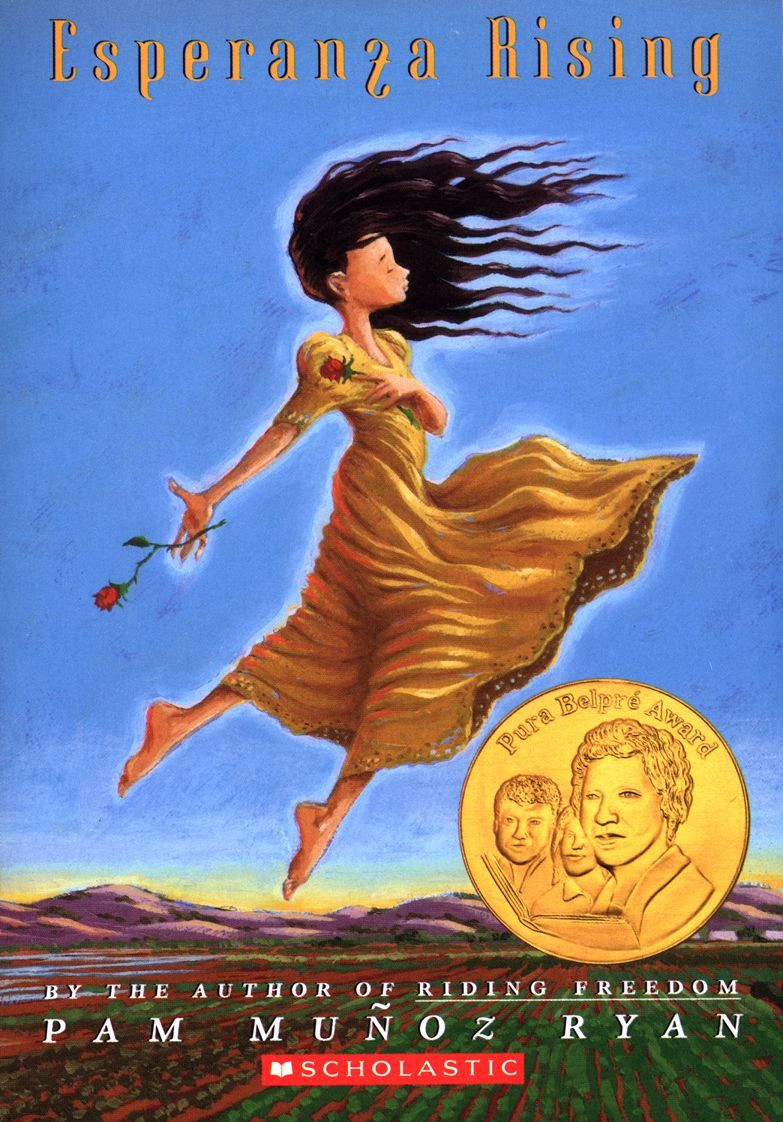In Spanish, the word "esperanza" means "hope," so the title of Pam Munoz Ryan's young adult novel, Esperanza Rising, has the benefit of a dual meaning. The story has the makings of a Disney film, with a young girl named Esperanza acting, essentially, as a young Mexican princess. While technically not a princess, Esperanza comes from a wealthy family in Mexico where she is attended by servants. However, Ryan's princess story has more humility than your typical Disney princess story, in which a beautiful young woman is rescued from her unfortunate circumstances by a handsome young prince. Ryan does not assume all beautiful young girls must move into the ranks of royalty. Instead, Esperanza falls from her privileged position to a much more modest, and labor-intensive one. The novel makes use of plenty of cliche plot elements, to be sure, but its many perceptive passages and its unique look into Mexican immigration during the Great Depression makes it an engrossing read. What's even more amazing is that it's based on a true story about Ryan's grandmother.
Esperanza's father is a wealthy landowner who is among the rare wealthy in the country loved by the people. This is impressive considering the novel takes place not long after the Mexican Revolution, when the people fought back against the greed and corruption of the wealthy. Her father is kind and generous, a rare trait among the wealthy. Esperanza, of course, is oblivious to the tensions between the wealthy and poor. Her world is filled with servants who do her bidding. They dress her and bathe her and play with her. She has never wanted for anything. Her closest friend is Miguel, but when Esperanza realizes they can never be more than friends, she tells him they live on opposite sides of the river. Esperanza has a good idea of her privilege, but lacks empathy.
However, Esperanza soon realizes just how superficially that river divides her world from Miguel's. The back of the novel says "a sudden tragedy shatters her world," and you can probably guess what it is. A series of events forces Esperanza, her mother, and Miguel and his family to migrate north to California. Esperanza's sweet side gives way to an obnoxious, bratty side. She complains about hiding in an uncomfortable wagon all the way to the border. She looks upon the dirty "peasants" with disgust. She throws a tantrum when she realizes she must share a two-room shack with two other families. And she's further angered at the prospect of having to work. This is what I like about the novel. Esperanza is not an angelic figure who makes a smooth transition from her position of wealth into her position of dire poverty. For a child accustomed to such privileged living, such a transition as Esperanza makes is not easy.
Esperanza quickly faces many human struggles her wealth had previously shielded her from. One struggle comes in the form of money. The three families barely have enough money to keep up with rent and feed themselves, which means everyone but the youngest must earn some money. Their struggles also come in the form of disease when Esperanza's mother comes down with Valley Fever. This illness takes an emotional toll on Esperanza, but also a financial toll on the household. There are also struggles with racism. The labor camps are divided largely by skin color, and it is noted with some jealousy that the whites get better living arrangements. The new Okies coming to town will have a swimming pool, and it's clear the labor camp owners want to encourage factions between their laborers in order to prevent effective labor strikes. These strikes also present a struggle. While Ryan doesn't necessarily take a stance for or against strikes, she shows that they threaten the livelihoods of those who simply want to survive. To strike for better living conditions is noble, but it comes at the potential cost of one's job. Through these struggles young Esperanza comes face to face with the realities of life.
The novel is aimed at younger teenagers, and I think it's important, culturally, alongside such classics as To Kill a Mockingbird and Of Mice and Men, which take place in the same era. There are some passages of beauty, such as the opening section when Esperanza's father teaches Esperanza how to hear the Earth's heartbeat. There are also many perceptive passages, such as when Esperanza struggles to get used to her new-found poverty. The setting is unique, and the titling of chapters after fruit and vegetables that play a role in those chapters is fun. There is some humor and some sorrow. Since it is aimed at children, the novel doesn't achieve the depth you will find in the two classics listed above, and it makes use of familiar, formulaic plot devices, though it uses them competently. Overall, though, there is plenty for both teens and adults to enjoy in Esperanza Rising.

No comments:
Post a Comment